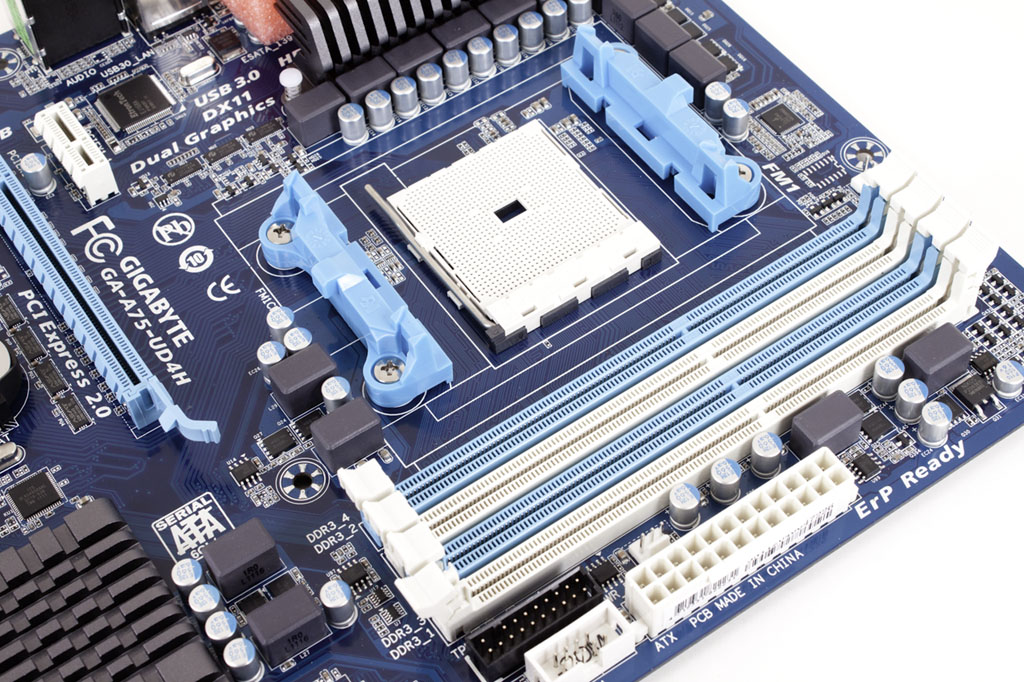The Test System and Comments -
Our test system is built on an open bench. This has two effects on testing. First it allows us to see everything and also to setup and disassemble the test rigs quickly. Second it means that we cannot gauge the potential air flow found in a normal case. The air is pretty stagnant; some may say this is a great neutral testing method and it can be. However, it does mean that the temperature reading taken off of the components are not accurate to what an average consumer would see. This means that your thermal performance will vary from what we see here.
The Gigabyte A75-UD4H was an easy board to setup and get running. Then again, many boards are easy these days. The only real issue we had was with the USB 3.0 controllers and our overclocking tests. Other than that things were very smooth.
Usually we only talk about the installation and setup during this section but we are going to change some of that staring with this review. As we tend to test things a little longer (and in some cases more thoroughly) we wanted to talk some about the overall experience. The first thing that we noticed was that the A75-UD4H when combined with the 3650 CPU from AMD felt quick and responsive for most tasks. We did not have any speed issues when running common tasks like browsing the web or even some light productivity work with applications like Office 2010.
In other words, the A75-UD4H “feels” like a very quick product. To the average consumer (and to some prosumers) this board would be excellent for day to day tasks and some light productivity work. Now let’s see if the numbers back up our impressions…
Performance testing overview -
Our testing is a little different than most. We combine both synthetic and real-world applications to simulate the types of performance common to the individual products. For motherboards this means that we run roughly six synthetic tests and two real-world. We will be expanding the real-world testing in the near future. But there is more to performance than just the raw numbers. As there are multiple components and sub-components on a motherboard there each item can have a distinct impact on the way the product will perform once you get it in your system. It is important to note not only the actual results but what they mean to you as a potential consumer. We will try to give this information to you. But we do not just cover the performance aspects that are measurable. We also talk about the components that might not have a direct benchmark. These are items like Audio Quality, ease of use and installation.




